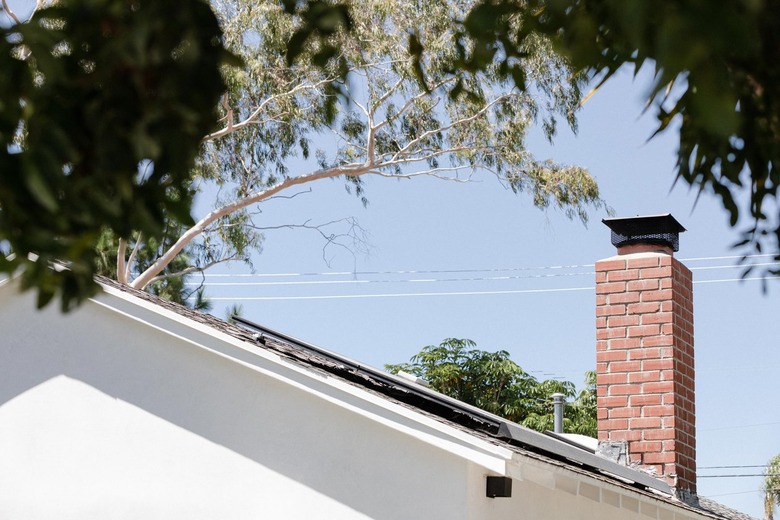12 Essential Tips For Staying Safe At Home During An Earthquake
We may receive a commission on purchases made from links.
While it's hard to predict earthquakes or their intensity, if you live in a quake-prone area, earthquake safety starts long before the first tremors. A few preventive measures make your home more earthquake-resistant, reducing the potential for injury as well as damage to your home and belongings.
With just a little preparedness, you can feel confident that when the shaking stops (and all through the aftershocks) that your home is safe and secure as you can possibly make it through an emergency. These 12 tips help ensure the safest possible outcome if a quake rocks your abode.
1. Keep Heavy Items Low
1. Keep Heavy Items Low
If you use shelves or cabinets in the home or garage to maximize storage, keep the heaviest boxes and single items on lower shelves. This ensures that during a quake, a heavy object won't have far to fall, which minimizes the risk for injury as well as damage to the fallen object. It's also a good tactic in general, as it ensures you won't ever pull something so heavy off a high shelf that it causes injury if you can't handle the heft. When using cabinets, install child-proof locks on the door handles to help keep stored items safely in the cabinets in the event of a quake.
2. Safety With Toxins
2. Safety With Toxins
Any poisons, solvents and potentially harmful chemicals, especially if they are in breakable containers, should be kept away from the house in a well-ventilated cabinet in a garage or shed. Keep the cabinet locked and make sure the cabinet is securely anchored to the wall so it can't fall or move.
3. Bolt Heavy Hanging Items
3. Bolt Heavy Hanging Items
Any weighty item that mounts on a wall, such as a framed picture or TV, must be securely fastened to the wall. Securing these items helps keep them on the wall, preventing their damage. Even more importantly, such efforts cut down on the chances of broken glass or debris on the floor, where it may become a hazard underfoot. Anchor wall-mounted items directly into wall studs for best results.
4. Use Quake-Friendly Picture Hardware
4. Use Quake-Friendly Picture Hardware
For lighter items that hang on a wall, using the right types of hooks and putties help ensure the items stay put when tremors hit. A safety hanger helps ensure that picture wire behind the frame doesn't slip out of the hanger. Likewise, tremor hooks help clip picture wire in place so it can't work loose if the wall shakes. Place quakeproof museum putty near the corners of the frame's back at the points where the frame touches the wall to keep the framed art or photo from smacking against the wall if the wall trembles.
5. Secure Bookcases and Dressers
5. Secure Bookcases and Dressers
Bookcases, dressers and similar wall-hugging furnishings may fall over during an earthquake if they are not secured to a wall. Attach the top back side of such items to a wall with earthquake straps or anchor kits designed to keep furniture in place for child safety. These usually mount to the furniture with screws, and the attached nylon webbing, braided cable or other flexible material attaches to wall studs or anchors with screws. Most of these devices are easily removed should you ever wish to rearrange the furniture.
6. Secure Fragile Home Accent Pieces
6. Secure Fragile Home Accent Pieces
Home decor items, such as knickknacks, are likely to fall off shelves and other display areas if not fastened to the surface upon which they sit. Just as you secured your picture frames, museum putty is the perfect option for such materials, as it won't harm the horizontal surface or the bottoms of your collectibles. Other fragile home goods, such as your best china that's only used on special occasions, should be stored in lockable low cabinets to prevent damage and injury.
7. Improve Window Earthquake Safety
7. Improve Window Earthquake Safety
During a quake, windows may break, but safety glass or security film helps keep the glass where it belongs. Tempered glass, a form of safety glass much stronger than regular glass, cracks into numerous small pieces that tend to stay together under impact. Regular window glass, on the other hand, breaks into sharp, spearlike shards that could cause injury. Laminated glass, which features a form of plastic between layers of glass, also helps prevent glass shards from leaving the frame under impact. These safety window glasses cost more than standard windows. Safety film is another option to improve window safety. Cut this material to size, wet it and smooth it onto the interior side of the window.
8. Prevent Appliance Movement
8. Prevent Appliance Movement
Large appliances, such as refrigerators, often have wheels. If yours does, lock the wheels so the refrigerator won't roll during a quake. Check other relatively large appliances for lockable wheels as well, such as portable standing dishwashers, air conditioners and dehumidifiers. Connect tall or heavy appliances — like water heaters — to the wall with heavy-duty earthquake straps that keep the appliances from tipping and from moving far.
Tethering devices may be made from various materials, such as braided wire or metal strapping, and feature one end that attaches to the top back of the appliance and the other to a wall stud or wall anchor. Be sure the straps you purchase are rated for the weight of the appliance you anchor.
9. Bolster Brick Chimneys
9. Bolster Brick Chimneys
Brick chimneys cause damage during earthquakes as the mortar cracks and crumbles. This causes bricks to fall, or even worse, the entire chimney may collapse. To prevent or at least minimize such damage, reinforce the chimney by adding diagonal steel bracing to help keep the bricks from falling. Replace the upper portion of a brick chimney with metal to reduce the potential for damage to items below. For utmost safety, remove the brick chimney all the way down to the top of the fireplace and replace it with lightweight materials that meet current codes.
10. Retrofit Your Home
10. Retrofit Your Home
If your home is decades old or older and you live in an area where quakes are common, a seismic retrofit helps ensure the house stays on its foundation. A retrofit typically bolts the house frame to its foundation plus braces the crawl space or cripple wall with plywood or similar materials. Contact a local contractor to determine what's needed for your home for improved earthquake safety in line with state codes. California even offers grants through its Earthquake Brace and Bolt program to cover such expenses, although the registration window is only open a short time each year.
11. Secure HVAC Equipment
11. Secure HVAC Equipment
If the HVAC unit moves much during an earthquake, it could damage any of the many components connected to it. A vibration isolator, which is like a shock absorber for the HVAC unit, helps prevent vibration and movement even when the ground shakes. Restraint brackets also help keep the unit from moving and work in conjunction with the vibration isolators. These can be retrofitted to your existing HVAC setup. Add flex-line piping over the rigid condensate and gas lines connected to the system to help protect your surroundings in the event the lines burst.
12. Personal Earthquake Safety
12. Personal Earthquake Safety
If an earthquake strikes while you're awake and alert, move to a crawling position and take cover beneath a sturdy table. Hold the table legs for added security. Even a small table does the trick; the goal is to cover your head and neck at very least. Getting low to the ground in a safe place away from windows and objects that may fall is the goal rather than standing along a wall or in a doorway. If you're in bed and don't have time to take cover, cover yourself with blankets and pillows, protecting your neck and head the most.
Prepare ahead of time by keeping a basic earthquake emergency kit in a handy location. Include at least a gallon of water per family member, or enough for three days. Also stock it with a flashlight, a first-aid kit, a wrench and pliers, a battery-operated radio so that you can hear emergency information, a copy of personal identification and enough nonperishable foods that can be eaten at room temperature to last at least several days. It's also advisable to have a fire extinguisher readily accessible just in case you need it.
Meet with loved ones in your home once in a while to discuss your emergency plan: Point out the safest exit points out of the home as well as reasonable alternative exits (it might even make sense to have a few earthquake drills — especially if you live with little ones). Bedrooms on upper floors benefit from fire escape ladders. Keep one in each room near a window, where it will be easily accessible should the need arise.
References
- Centers for Disease Control and Prevention: Stay Safe During an Earthquake
- The Framer's Workshop: Picture Hanging & Earthquake Safety Hardware
- One Day Glass: Is Tempered Glass a Safety Glass?
- Riot Glass: The Differences Between Laminated Glass & Tempered Glass
- HomeLight: How to Earthquake-Proof Your House for Safety: A Rock-Solid Guide
- Anchorit.gov: Home
- Centers for Disease Control and Prevention: Preparing for an Earthquake
- Earthquake Brace + Bolt: Home

